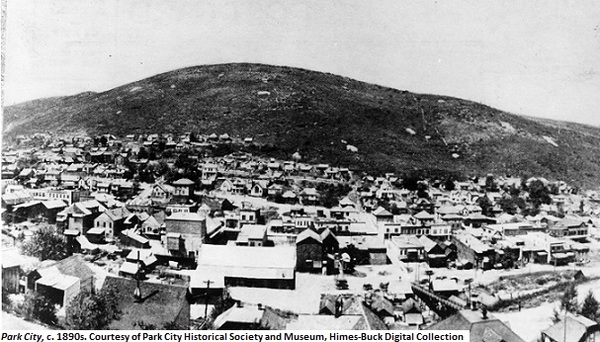Dublin Core
Title
Description
Barred from lucrative work and hounded by local residents, it took years of discrimination against Chinese workers to erase their contributions to Park City.
All that remains of Park City’s once-thriving Chinatown is a name on a parking garage: China Bridge. Like many towns throughout the West, Park City was home to hundreds of Chinese residents around the turn of the 20th century. But a decades-long legacy of discrimination on the local, regional, and national levels all but erased Chinese contributions to Park City’s history.
The 1880s were a watershed decade for Chinese people in the United States. The 1882 Chinese Exclusion Act outlawed Chinese immigration and affected the lives of those already living here. In 1885, a riot between Chinese and white immigrant miners in Rock Springs, Wyoming resulted in the deaths of 28 Chinese miners and millions in damage to Chinese property. After the riot, most mine companies across the West fired Chinese miners and banned them from underground positions. Park City mining companies followed suit.
By 1893, about 400 Chinese residents lived in Park City, roughly 10% of the population. But the town’s white residents were not always kind. The local newspaper is full of reports detailing abusive antics toward Chinese residents. Children and drunks threw rocks at their homes and businesses, while countless fights and cases of bullying were only casually mentioned alongside birth announcements and society updates. A local mine company even funded a bridge built over Chinatown so that people walking east from Main Street to Rossie Hill need not pass through the Chinese neighborhood. This bridge is where today’s parking garage gets its name.
Barred from most work in the mining industry, many Chinese residents made ends meet by running laundries and restaurants, or working as boarding house cooks and servants. But in 1903, local labor unions called for a boycott against Chinese-owned businesses and white-owned businesses with Chinese employees. By the 1920s, only three Chinese families remained in Park City, one operating a laundry and the other two running restaurants. After World War II, even these families left. And what little physical evidence of Chinatown that remained has since been completely demolished.
Creator
Mahala Ruddell for the Park City Museum © 2017
Source
Image: In this view of Park City from the 1890s, Chinatown and China Bridge are visible on the bottom right. Courtesy Park City Historical Society and Museum, Himes-Buck Digital Collection.
_______________
See Taft Alfred Larson, History of Wyoming, University of Nebraska Press, 1990; “Park Float,” Park Record, December 24, 1881; “Chinese and Registration,” Park Record, April 29, 1893; “White or Chinese,” Park Record, January 24, 1903; “Union Labor and White Labor,” Park Record, January 31, 1903; “Immigration: Chinese Exclusion,” Library of Congress classroom materials, accessed at http://www.loc.gov/teachers/classroommaterials/presentationsandactivities/presentations/immigration/chinese6.html

